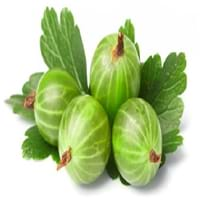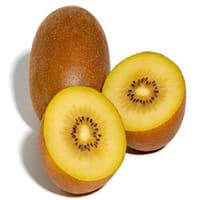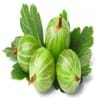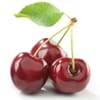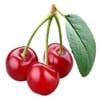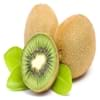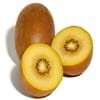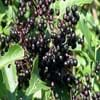Health Benefits
Arthritis prevention, Cancer prevention, Liver health, Scurvy treatment, Ulcer prevention
Asthma treatment, Heart care, Improves stomach health, Regulation of heart rate, Treatment of skin Diseases
General Benefits
Boosts immune system, Digestive aid, Eye care, Fights against infections, Improves blood circulation, Maintains healthy cholesterol level, Sore throat treatment, Treatment of common cold
Boosts immune system, Controls blood pressure, Eye care, Helps in weight loss
Skin Benefits
Anti-aging benefits, Brightens and lightens complexion, Reduces wrinkles, Treatment of acne
Brightens and lightens complexion, Heals sunburn, Reduces wrinkles, Skin rejuvenation, Treatment of acne, Treatment of dark spots, Treatment of skin diseases
Hair Benefits
Prevents hair loss, Promotes longer and healthier hair, Treatment of dandruff
Prevents hair loss, Promotes longer and healthier hair, Treatment of dandruff
Allergy Symptoms
Constipation, Diarrhea, Drop in blood pressure, Eczema, Facial swelling, Hives, Hoarseness, Itching, Itchy eyes, Nausea, Red rash, Redness of eyes, Runny nose, Sore eyes, Swelling of mouth, tongue or lips, Tingling sensation in mouth, Vomiting
Abdominal pains, Anaphylaxis, Breathing difficulty, Itching in tongue and other parts of mouth, Itching sensation in throat, Swelling of mouth, tongue or lips, Vomiting
Side Effects
Gastric irritation
Allergic reaction, Diarrhoea, Skin rash, Possibly unsafe during pregnancy
Best Time to Eat
Best if taken as a breakfast (or empty stomach), As a snack in the late afternoon, Don't consume at night and before bed, Morning time (before lunch)
Any time except an hour after meal
Vitamin B5 (Pantothenic Acid)
Vitamin C (Ascorbic Acid)
Vitamin K (Phyllochinone)
Not Available
Lutein+Zeaxanthin
Not Available
Phytosterol
Not Available
Calories in Fresh Fruit with Peel
Calories in Fresh Fruit without Peel
Not Available
Not Available
Calories in Frozen Form
Not Available
Not Available
Calories in Dried Form
Not Available
Type
Berry, Tree fruit
Tropical
Season
Summer
Spring, Summer, Winter
Varieties
Whinham's Industry, Green Hansa, Clark, Chataqua, Invicta, Keepsake, Lepaa Red, May Duke and Whitesmith
Qing Yuan #27, Qing Yuan #29, Qing Yuan #6 and Huang Yan
Color
Green, Purple, Red, Yellow
Brown, Yellow
Inside Color
Yellowish Green
Yellow
Origin
Africa, Europe, South-West Asia
China
Soil Type
Loamy, Well-drained
Well-drained
Climatic Conditions
Dry, Warm
Cold, Sunny
Facts about
- Traditionally, kids were told that babies were found under gooseberry bushes.
- They are also called 'fayberries' due to an ancient belief that fairies hid in gooseberry bushes to avoid danger.
- The name Kiwi is due to its resemblance with 'Kiwi' bird.
- This variety of Kiwi was developed by New Zealand, it is not fuzzy on the outside and it has a taste reminiscent of the mango fruit.
Top Producer
Germany
Italy
Other Countries
Austria, Czech Republic, Denmark, Hungary, Lithuania, Poland, Russia, Ukraine, United Kingdom
Chile, France, Greece, Iran, Japan, New Zealand, Portugal, Turkey, United States of America
Top Importer
Not Available
United States of America
Top Exporter
Not Available
New Zealand
Botanical Name
Ribes uva-crispa
Actinidia chinensis
Synonym
Ribes grossularia
Not Available
Subkingdom
Tracheobionta
Tracheobionta
Division
Magnoliophyta
Magnoliophyta
Class
Magnoliopsida
Magnoliopsida
Subclass
Dillenhidae
Dillenhidae
Order
Saxifragales
Ericales
Family
Grossulariaceae
Actinidiaceae
Species
R. uva-crispa
A. chinensis
Generic Group
Saxifrage
Kiwi
Difference Between Gooseberry and Gold Kiwi
We might think that Gooseberry and Gold Kiwi are similar with respect to nutritional value and health benefits. But the nutrient content of both fruits is different. Gooseberry and Gold Kiwi Facts such as their taste, shape, color, and size are also distinct. The difference between Gooseberry and Gold Kiwi is explained here.
The amount of calories in 100 gm of fresh Gooseberry and Gold Kiwi with peel is 44.00 kcal and 60.00 kcal and the amount of calories without peel is Not Available and Not Available respectively. Thus, Gooseberry and Gold Kiwi belong to Low Calorie Fruits and Low Calorie Fruits category.These fruits might or might not differ with respect to their scientific classification. The order of Gooseberry and Gold Kiwi is Saxifragales and Ericales respectively. Gooseberry belongs to Grossulariaceae family and Gold Kiwi belongs to Actinidiaceae family. Gooseberry belongs to Ribes genus of R. uva-crispa species and Gold Kiwi belongs to Actinidia genus of A. chinensis species. Beings plants, both fruits belong to Plantae Kingdom.
